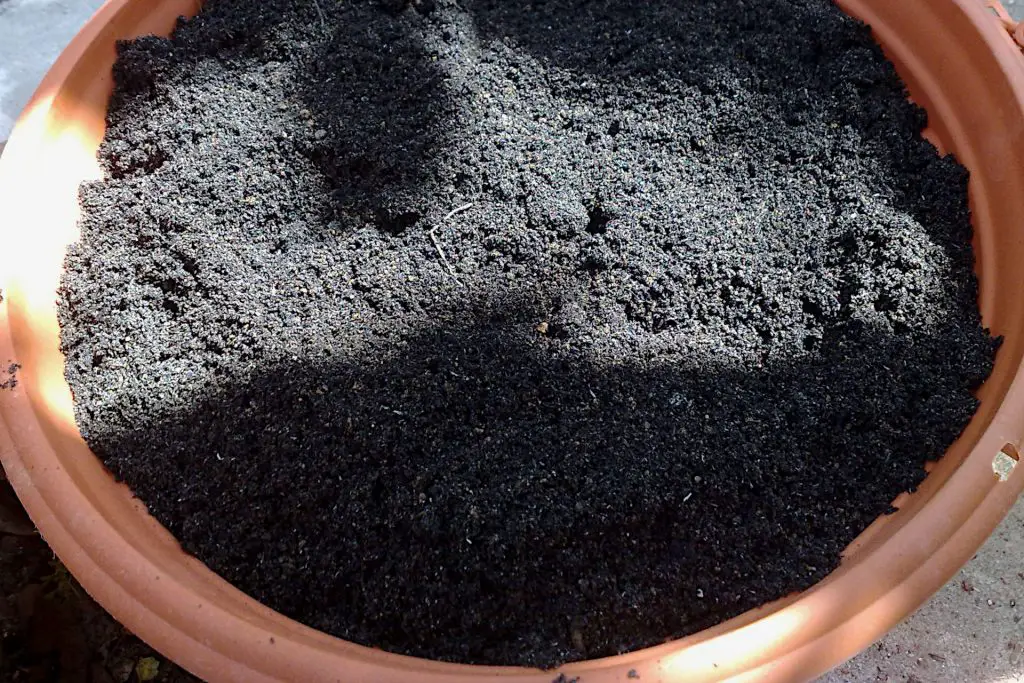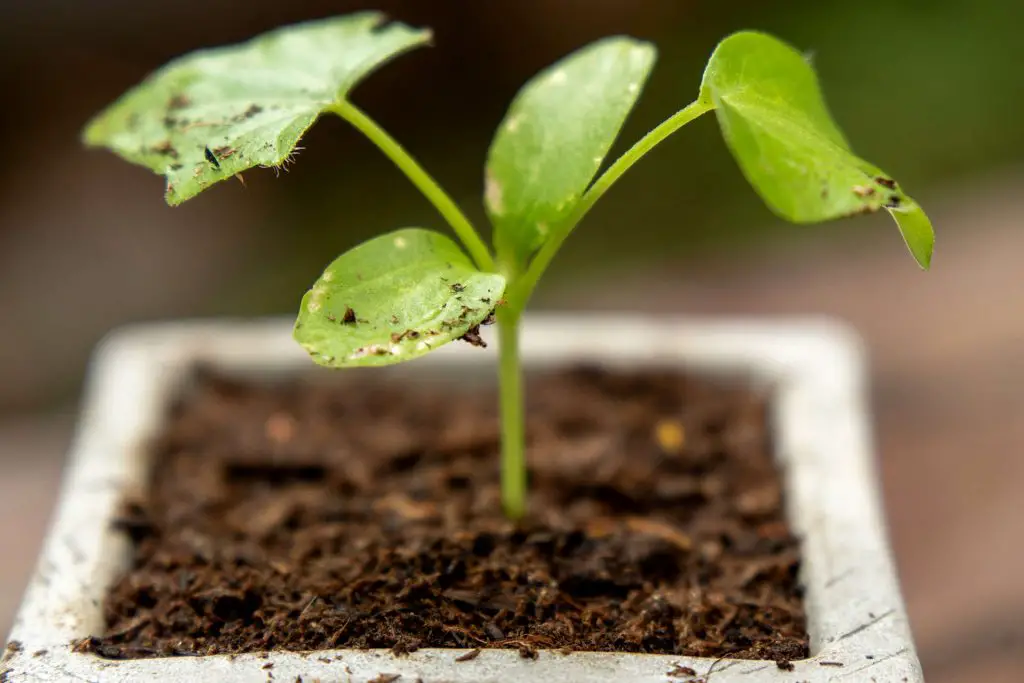Compost vs Potting Soil: What Are the Differences and Which Should Use Use?
Potting soil is a sterilized material made up of both organic and inorganic matter. It has few nutrients with a sterilization process eradicating seeds, pathogens, and fungi, but also removing beneficial microorganisms. It contains a percentage of sand, and often perlite and or/and charcoal to aid with aeration and drainage. By contrast, compost is a decomposed, usually fully organic material, that is rich in nutrients and beneficial bacteria. It has good water retention properties and improves both the structure and nutrient value of the soil but it is not, in itself, soil.
Although sometimes used interchangeably, potting soil and compost are two different materials, with neither, in themselves, being soil. Both serve different purposes and are not really synonymous with each other but can be in some cases complementary.
As they are not interchangeable it is important to understand the differences and similarities between each in order to use the right medium for the right purpose.
Is Compost Different from Potting Soil

Compost and potting soil are two different mediums that are commonly used in homes and gardens. They differ both in makeup and in end-use and using the wrong medium in the wrong circumstances can have a considerable detrimental effect on your plants.
The main difference between compost and potting soil is that compost is an organic material whereas potting soil is a non-organic material. These differences lead them to have different beneficial properties consequently each medium is used for different purposes.
What is Compost
In essence, compost is a nutrient-rich organic material composed of carbon, nitrogen, phosphorus, potassium, calcium, magnesium, iron, sulfur, copper, and zinc. It is produced by the decomposition of organic materials such as manure, vegetable peelings, grass clippings, leaves, wood chips, etc.
The process begins when green and brown organic materials are mixed together and then exposed to air and heat, which allows the microorganisms present within the mixture to break down the materials creating a nutrient-rich medium.
There are numerous types of compost each providing different nutrient levels and ratios. The most common types of compost are homemade compost and commercially produced regular compost, which you can find available in garden centers, grocery and hardware stores, and even in gas stations.
In addition, there are a number of specialty composts that have variations in nutrient quantities and ratios, raw manures, such as cow, horse, chicken, and rabbit. There are also depleted growing mediums such as mushroom compost.
Each has there own particular properties and benefits but it is important to bear in mind that compost is a soil amendment rather than a direct growing medium.
What Is Potting Soil?
Despite its name potting soil is not soil but is a specialized growing medium that is designed to produce a sterilized environment to grow seeds or seedlings in an artificial space such as a pot, or container.
It is a composition of both organic and non-organic materials that have been sterilized. The organic material provides a limited amount of nutrients but beneficial bacterial microorganisms, as well as stray seeds, pathogens, and fungi, are destroyed by the sterilization process.
The non-organic material is made up of silicon dioxide (sand), aluminum oxide (perlite), and clay. Sand is inert and inert means it doesn’t react chemically with anything else. Perlite is porous so when added to a mix will allow air to penetrate the mixture and keep the moisture levels high. Clay particles prevent the growth of weeds and hold onto nutrients.
The main way that potting soil differs from compost is that it is manufactured specifically for the purpose of being used as a growing medium. Compost is produced for many different uses including mulch, animal bedding, fertilizer, soil amendments etc.
The lack of beneficial bacterial means that unlike compost potting soil is unable to help fight plant diseases or infections that might occur during the growing process.
Should you use potting soil or compost?

Compost and potting soil are great growing mediums for their respective uses. In general, you can divide these use between open and containerized planting.
Growing from Seed, Seedlings, or From Propagating Existing Plants
When it comes to growing from seed, seedlings, or from propagating existing plants. potting mix is one of the best options to use. Its sterilized properties are ideal as they prevent the fungi, pathogens, or stray seed from damaging or killing the plant in its early stages of growth. You could also use or mix in mushroom compost as it has the sterilized properties, although it might not be as structurally supportive as potting mix if used on its own.
Growing in Containers
If you are growing in pots, whether indoors or outdoors, potting mix is an excellent growth medium for this use case. Its sterile nature is particularly beneficial for indoor plants in preventing the passing of pathogens or fungi from the growing medium in the container.
Growing in Raised Beds
Although a containerized space raised beds are generally large enough to support their own soil ecosystem. As such the muse of native soil mixed with compost is the best growing medium for this platform.
Open Planting
Open planting is any planting that is done outdoors in native soil. Be it on land or in cultivated beds it is best to use compost as a soil amendment. The type and quality of compost will depend on numerous factors from soil type, and soil quality to the type of plant grown. It is always advisable to conduct regular soil tests on the soil and adjust the type and quantity of amendments accordingly.
Should You Plant in Only Potting Mix?
If you are using a potting mix to plant the limited amount of nutrients dictates that it will only allow the plant to grow and thrive in the short term as the nutrients will deplete quickly as the plants grow. Additional nutrients in the form of fertilizer will have to be applied after a few weeks to maintain the plant’s ability to thrive. As such potting mixes are most suitable for small-scale containerized or indoor gardening.
If you are planning on growing your plants outdoors then you should consider adding some additional nutrients to your potting mix during planting. These include; Nitrogen, Phosphorous, Potassium, Calcium, Magnesium, Iron, Sulfur, Boron, and Zinc.
How Much Potting Mix is Needed?
Clearly, this will largely be dependent on how large your pot or receptacle is. For example, A 10-liter pot needs about 3kg of potting mix whereas a 5-liter pot needs 2kg. You can always add extra later on if needed.
When choosing your potting mix make sure that it has enough nutrients for the size of your plant. Some mixes come pre-mixed and others require you to add the ingredients yourself.
Is It Possible to Substitute Compost for Potting Soil?

Unlike potting soil, compost is not a direct growing medium but is primarily used as a soil amendment. Growing plants directly in compost is not an approach that is typically encouraged. A growing medium composed entirely of compost would lack the density provided by soil, leading to inadequate structural support for the growing plant.
In addition, whilst compost has good qualities of water retention when combined with soil, on its own, the looseness of the material can result in the water passing straight through. This can be exasperated if the compost dries out and becomes hydrophobic, preventing water from being easily absorbed into the material.
Mushroom Compost
One exception to this is mushroom compost. It has a better structure than regular compost because of the added sand, chalk, and sometimes gypsum. It is sterilized like potting soil, and also has enhanced water retention capabilities, with the compost being able to absorb and retain large amounts of water.
However, the downside, similarly to potting soil, has limited quantities of nutrients and elevated hard salt levels making it unsuitable as a stand-alone alternative because the salt can adversely affect germinating seeds. It can though, be combined with potting mix to create a better-growing medium for mature plants.
Should You Add Compost to Potting Mix?
As we have noted above, potting mix is an excellent growing medium when used for seeds, propagation, and household plants. Its main drawback is the limited amount of nutrients that it has and although great in the first few weeks of growth the nutrients it does possess will become depleted and will need supplementing.
One way to do this is to use compost or fertilizer. If you are adding compost then mushroom compost is similarly sterilized and is possibly the best choice for indoor house plants.
You can combine amendments with the initial mix or add a layer to the top of your plant after the seeds have germinated or seedlings matured.
Summary: Compost vs Potting Soil
Although they are often packaged in similar cu ft bags and both used in the growth propagation of plants the distinction between compost being a soil amendment and potting mix is a growing medium is important.
They both have different properties and nutrient values. This means that the two mediums are not synonymous and cannot be substituted for each other. That being said compost can be added as an amendment to potting mix.
In terms of use, the differential tends to be based on whether the plant is going to be in a container or open planted, with compost being an amendment rather than a free-standing growth medium.
Commonly Asked Questions
Do indoor plants need compost?
If you are using a potting mix to plant, then these tend to have limited amounts of nutrients. A plant needs a constant supply of nutrients to grow and thrive. The nutrients in potting soil will be consumed relatively quickly and will need to be supplemented by the addition of either fertilizer or compost after a few weeks of growth.
Can I just use compost in a raised bed?
Compost is a soil amendment and not a direct growing medium. It is not advisable to use just compost solely in a raised bed as without soil it lacks the structure to support a growing plant. In addition, because of the looseness of the medium, on its own, it will struggle to retain water.
Should I mix compost with soil?
Mixing compost with soil is an excellent way of increasing the nutrients available to a plant and improving the structure and ecosystem of the soil. All plants need nutrients and as they grow they deplete the available nutrients from the soil. Mixing compost into the soil supplements these nutrients allowing plants to thrive and reach their full growth potential.
How much compost do I mix with soil?
There are a lot of factors, such as soil type quality and intended plants to grow, that should determine the compost to soil ratio of a mix. As a general rule of thumb, two or three-parts soil to one-part compost works well in most cases.
